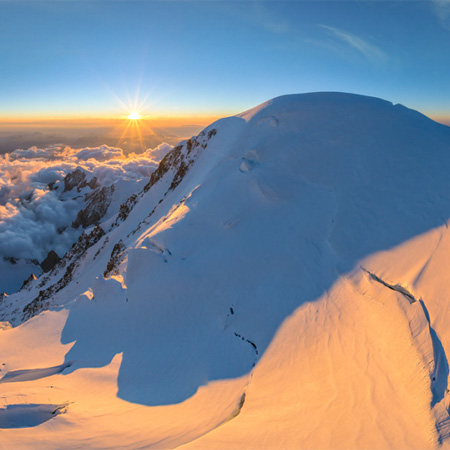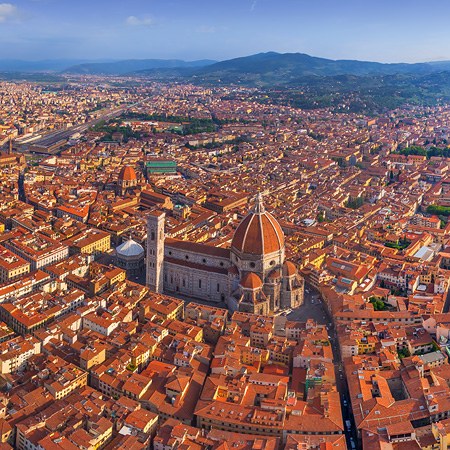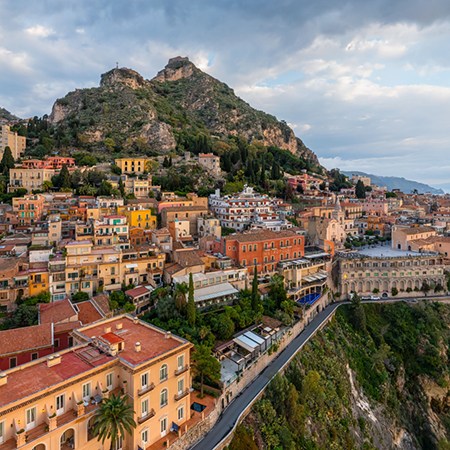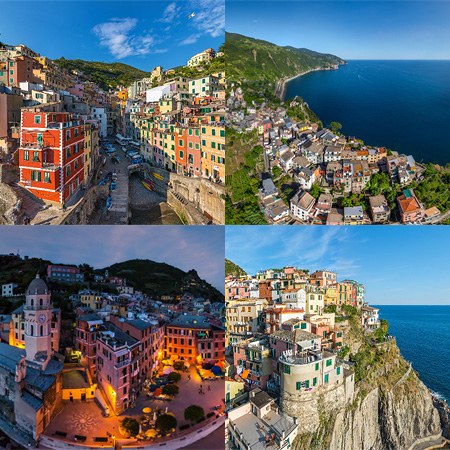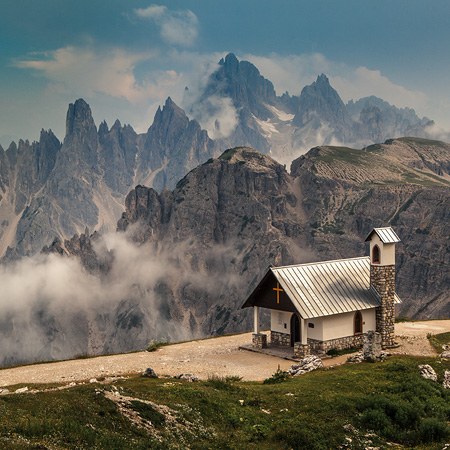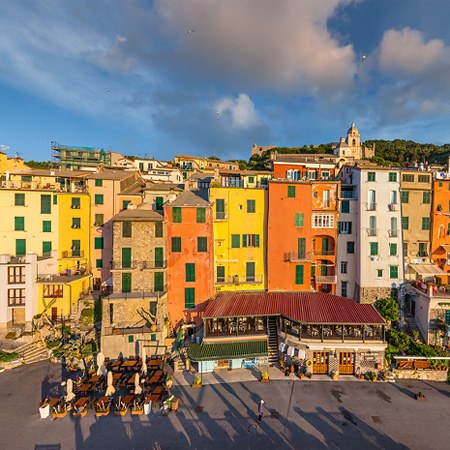Mont Blanc, Italy-France. Part I
Originating from the French cost of the Mediterranean, not far from Nice, and stretching all the way through the territory of Switzerland, Italy, former Yugoslavia, Germany and Austria, with its end near the Pannonian plain, the Alps are the greatest and most famous mountain range of Europe.

Mont Blanc, being both a separate mountain and a mountain range stretching throughout 50 kilometers, is situated in the very heart of the Alps. The officially recognized altitude of the mountain is 4810 meters, even though it is not stable. Within the period between 2003 and 2007 the height gained 55 centimeters, and two years afterwards it decreased by the same amount. The latest measurements carried out by French scientists in 2015 estimated the altitude to be 4808 meters above sea level. Such deviations are the results of rock movement and ice melting. In spite of all this, Mont Blanc is still the highest point in Europe.

However, even this chart rating may be disputed. The point is that the famous Elbrus measured 5642 meters is situated on the border between Europe and Asia. Thus, when it is referred to Asia, Montblanc is truly the highest peak in Europe, but in case Elbrus belongs to Europe, Montblanc moves to the second place.

As well as Elbrus, Montblanc lies on the border, separating France and Italy. From both languages (Mont Blanc and Monte Bianco) the name is translated as "the White Mountain". Actually, even now the countries can not clarify the ownership of this great natural monument. Formerly, the entire mountain was within the Duchy of Savoy. Later, in 1723 it became a part of the Kingdom of Sardinia. Within the period of the up-coming wars, these lands were continuously passing from one to the other side. In 1861 a demarcation agreement was signed defining Mont Blanc as the border between France and Italy.

The 1860 act and attached maps are still legally valid for both the French and Italian governments. However, due to the development of tourism, both countries are eager to gain the most profitable sections of the mountain surface. And it can't do without some amusing incidents: in 2015 both Italian and French representatives regularly shifted the border-marks up to 100-150 meters, sometimes even using bulldozers.
The first mention about of the Mont Blanc ascent is dated 8 August 1786. Since then the closest towns of Courmayeur (Italy) and Chamonix (France) have been servicing thousands of tourists coming for mountaineering and alpine skis (maybe "skiing"?). In 1965 a tunnel with a length of 11 kilometers carved through Mont Blanc was inaugurated. Connecting two countries, the tunnel has an average traffic of 5000 vehicles per day.

One more outstanding peak of the Mont Blanc Massif is Mont Maudit having the altitude of 4465 meters and separating Rhône-Alpes region in France from the Aosta Valley located in Italy. According to local legends appeared back in the Roman period, the steep gorges of this area were inhabited by spirits and daemons, who used to push huge ice blocks off the slopes while witches were dancing on the top of the mountain. English map-maker and traveler William Windham, who had been exploring this area in the beginning of the 18th century, was so impressed by the ancient myths that until the end of the century Mont Blanc and its satellite peaks were collectively known in French as the Montagne Maudite (Cursed Mountain).

The name of the 3842-meters peak Aiguille du Midi literally translates from French as the "peak of the noon". You'll understand its name when viewed from Chamonix: it almost indicates noon when the sun passes over its summit.

The peak of Petit Dru with the altitude of 3733 meters is considered to be one of the most beautiful and challenging to ascent peaks in the Alps. On the whole, being situated on the territory of three countries — Italy, France and Switzerland — the Mont Blanc Massif has 57 peaks with the smallest one having the altitude of 2374 meters. Though very few of us can success in climbing the mountains, still one can visit the Alps without leaving home — by simply watching our panoramas or 360° video.
Photos and video by Ivan Roslyakov
18 October 2016
Read more
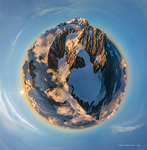 Tré la Tête and Aiguille des glaciers. Planet
Tré la Tête and Aiguille des glaciers. Planet
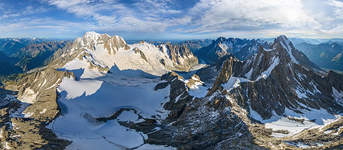 Near Dent du Geant
Near Dent du Geant
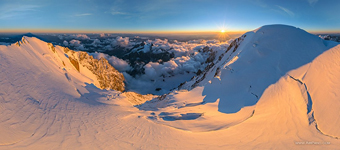 Near Mont Blanc de Courmayeur at sunset
Near Mont Blanc de Courmayeur at sunset
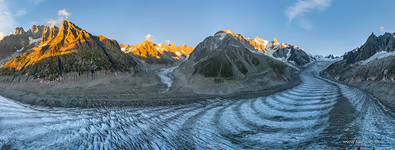 Mer de Glace Glacier #2
Mer de Glace Glacier #2
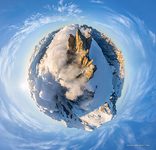 Aiguille du Midi #4. Planet
Aiguille du Midi #4. Planet
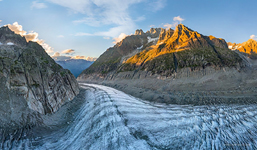 Mer de Glace Glacier #1
Mer de Glace Glacier #1
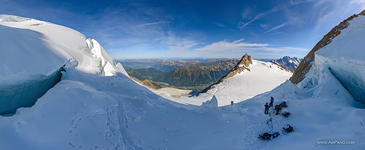 Mont Blanc du Tacul uprising crack #2
Mont Blanc du Tacul uprising crack #2
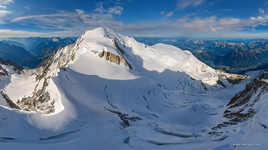 Above the Mont Maudit
Above the Mont Maudit
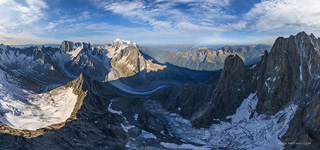 Close to Aiguille Verte
Close to Aiguille Verte
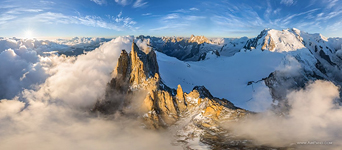 Aiguille du Midi #1
Aiguille du Midi #1
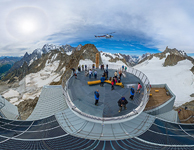 Cable car of Heilbroner
Cable car of Heilbroner
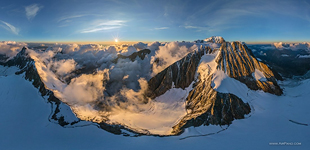 Among the mountains Tré la Tête and Aiguille des glaciers
Among the mountains Tré la Tête and Aiguille des glaciers
Virtual Travels in 360°
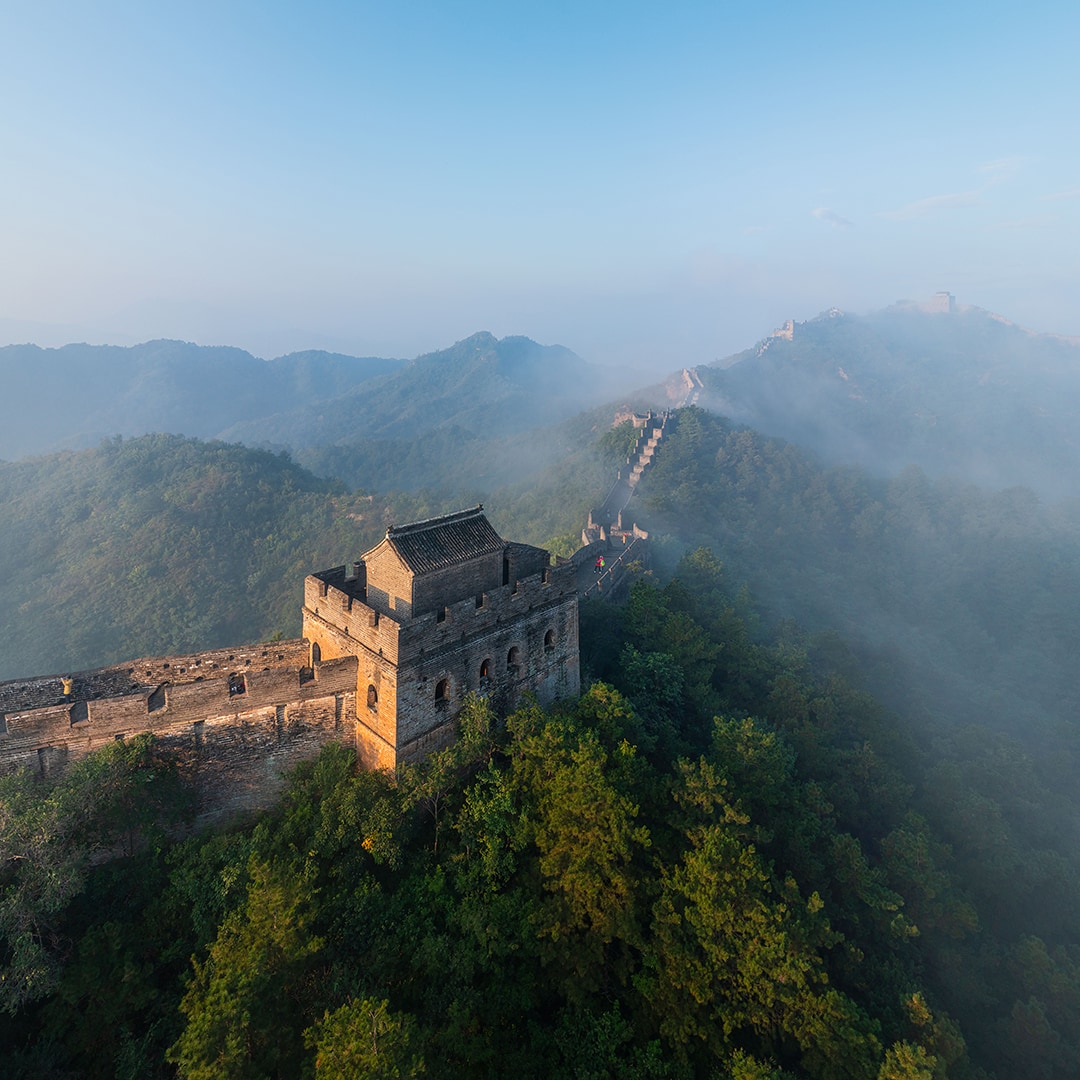 Misty morning, Great Wall of China
Misty morning, Great Wall of China
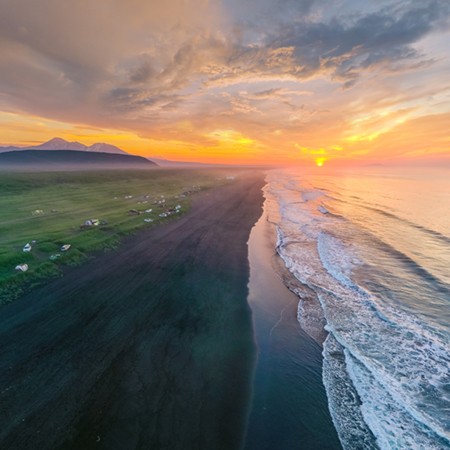 Trip to Kamchatka
Trip to Kamchatka
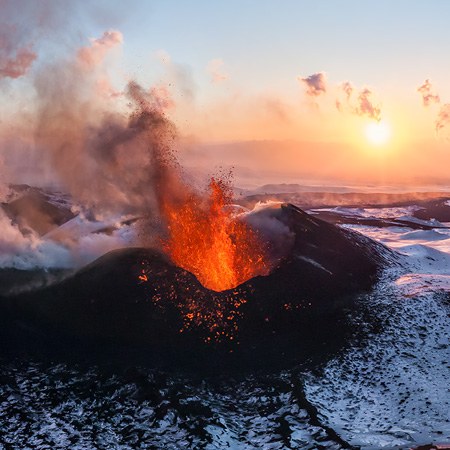 Volcano Plosky Tolbachik, Kamchatka, Russia, 2012
Volcano Plosky Tolbachik, Kamchatka, Russia, 2012
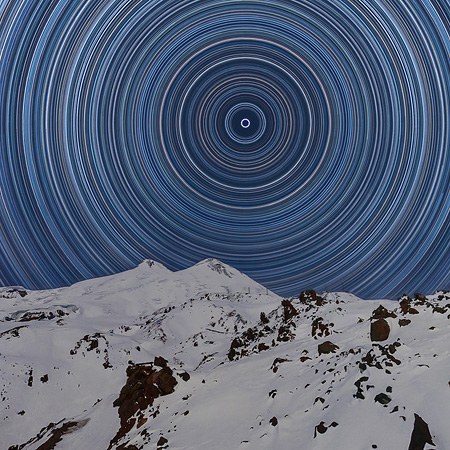 Starry sky over mount Elbrus
Starry sky over mount Elbrus
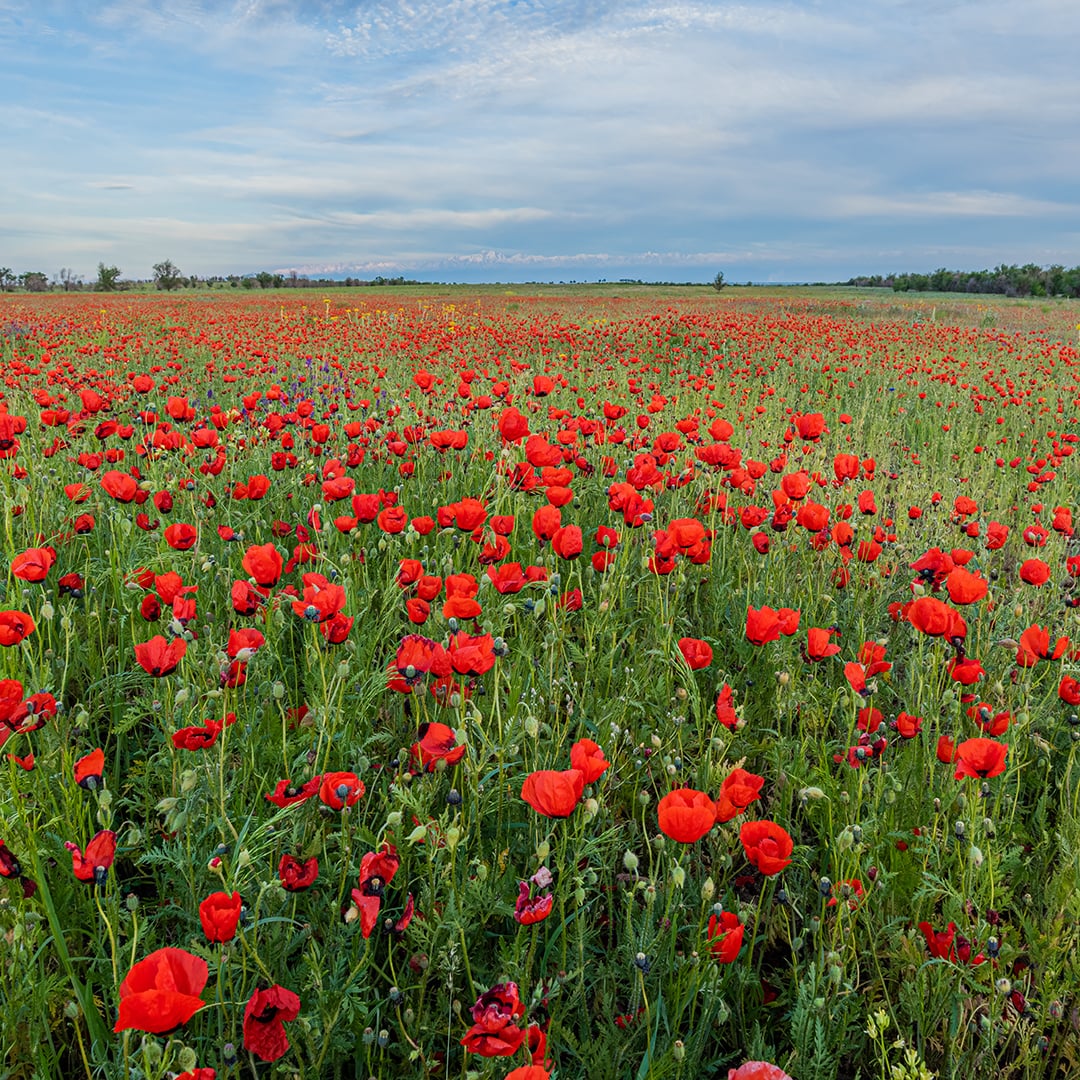 Over the poppy field
Over the poppy field
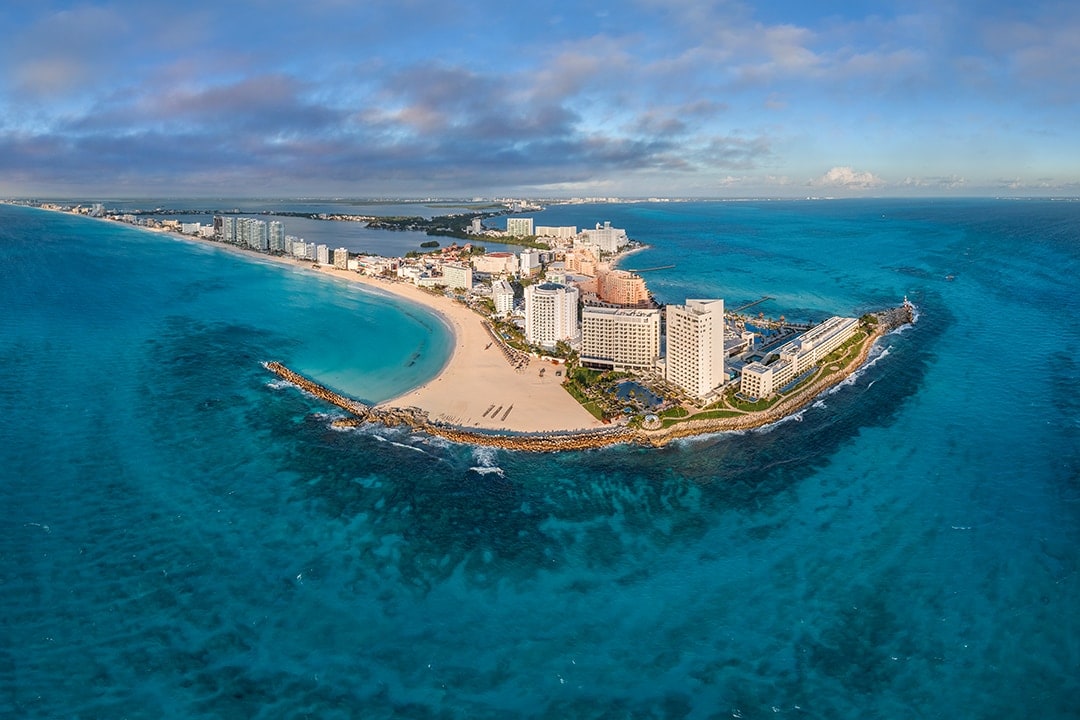 Cancun, Mexico. 16K 360° video trailer
Cancun, Mexico. 16K 360° video trailer
 Kazan, Russia
Kazan, Russia
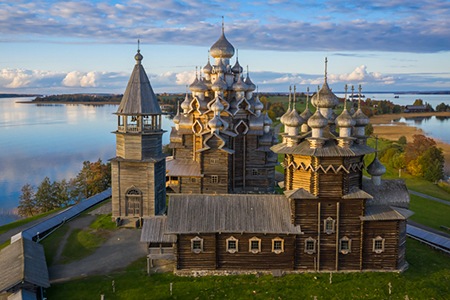 Kizhi. The wooden wonder of Russia
Kizhi. The wooden wonder of Russia
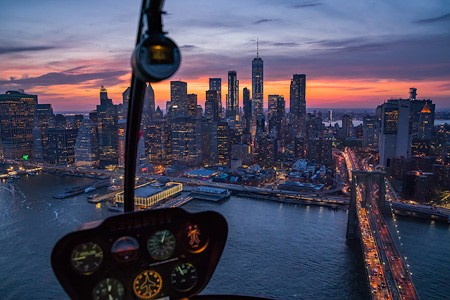 New York, USA. City of Skyscrapers
New York, USA. City of Skyscrapers
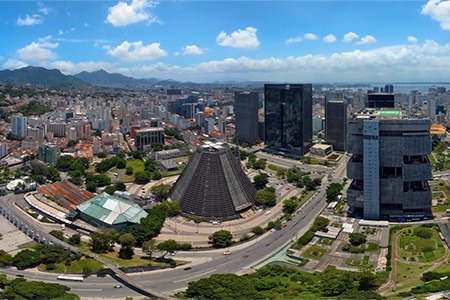 Rio de Janeiro. City Landscapes
Rio de Janeiro. City Landscapes
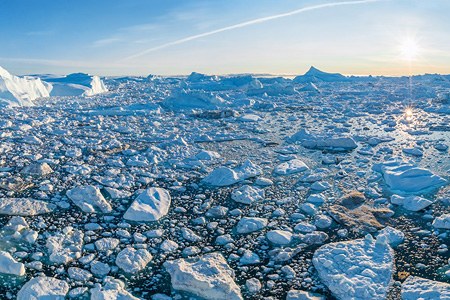 Icebergs of Greenland. Part I
Icebergs of Greenland. Part I
Show more




